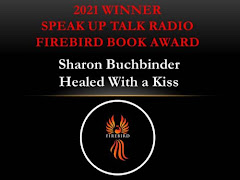Okay, so that definition sounds convoluted to anyone who isn't an English teacher. Because I'm for simplifying things, let me explain it in simpler, more useful terms— When writing fiction, a pronoun takes the place of the last noun, thing, or name used.
The most serious infraction when using "it" is, of course, a Pronoun Reference Error. Such mistakes cause various calamities, faux pas, awkwardness, hilarity, and downright confusion when a reader encounters such errors.
Why? Because CLARITY ensures the reader doesn't stop reading to puzzle out what the pronoun refers to. After all, nothing should ever stop a reader from enjoying what they are reading. Here is a correct example of pronoun use—
"Marsha loved ice cream. It was her comfort food." ("It" refers to the ice cream.)
Now for an example of what can go wrong—
He dropped the thermometer, securing it to the side of the boat so it dangled in the water. The temperature held at forty-eight degrees. It was cold enough to make him shudder.
Now let's translate those "its" to show what they refer to—
He dropped the thermometer, securing the thermometer to the side of the boat so the boat dangled in the water. The temperature held at forty-eight degrees. Degrees was cold enough to make him shudder.
The humorous image of the boat dangling is one a reader should not conjure in their mind. And the last sentence makes no sense because "Degrees" is the subject. This passage also has what's called a crop of "its." Crops of are unnecessary repetitions and should be ruthlessly weeded out. So, let's look at this passage for what was actually meant—
Using string he'd attached to the top of the thermometer, John lowered the digital device over the side of the dingy. When the thermometer was half submerged in the water, he secured the line to an oar mount. He leaned over, watching, waiting, noting the digits slowly winked down until they held at forty-eight.
Forty-eight degrees. Would his wet suit keep him warm enough, long enough?
In your mind, you had no trouble with the correct example. You easily followed what happened as it happened. You didn't stop and go back to puzzle anything out. This re-edited passage shows (instead of tells).
Which brings me to—"it" often peppers a page because "it" is one of those "shorthand words" grabbed in the heat of drafting. Take a moment now to test your writing for the use of "it." You can use a sample of five or ten pages, or one of your short stories, or a chapter of your novel. Use your computer's search-find feature and type in it — however — be sure to put a space before and after the word so the computer doesn't find words with "it" as part of the word.
Since your computer highlights the word "it," what do you see? Did you pepper a page? Do you have "crops of?" You should also do a ratio (divide the total number found into the total number of words checked, which will net 1 "it" every ____ words). Nothing beats a visual to actually see what's what. And nothing beats doing a ratio to discover repetitions that are detrimental to the story or which showcase overuse of crutch words (words unknowingly relied on).
Oh, and do consider this—if you have a problem in those few pages you sampled, it's likely there are hundreds more in the rest of the manuscript to weed out.
For those who don't seem to have a problem with "it," take no chances. Add a "pronoun reference error check" on your Revision To Do List when you get to the polishing stage for your story. You do have a check list for your revision process, right? After all, you want the best possible manuscript to present, one that's free of repetitions without purpose.
By the way, "it" is number four on my free Writers Cheat Sheets list of 10 Red Flag Words.
And lastly, I collect ratio data on repetitions of Red Flag Words like "it." If you do an "it" check, please share your findings with a comment.
Catherine E. McLean website: http://www.CatherineEmclean.
Email: catherinemclean00@gmail.com
Writers Cheat Sheets website: http://www.WritersCheatSheets.
Writers Cheat Sheet Blog: http://jewelsofthesky.
Linked-In: http://www.linkedin.com/pub/
Facebook https://www.facebook.com/
Twitter: https://twitter.com/#!/
Revision is a Process hashtag: #revisionisaprocess
Pinterest: http://www.pinterest.com/















































Love the picture of Cousin It. Guilty many times over of the lazy use of the word, it. Hope to do better and remember to do a word search for it during my rewrites.
ReplyDeleteHi, Kathy,
ReplyDeleteI think only a genius-genius can keep in mind every Red Flag word, phrase, or item that should be looked at when revising and polishing a draft. That's why I urge you to start your own check list (or cheat sheet!) for IT and any other items you need to look at when revising. I keep a "master list" on my computer so when it's time to revise my drafts, I can run a fresh copy and check off the items one by one.
I wish you all the best with your writing and thank you for stopping by today.
Thank you, Catherine. Useful info, as usual.
ReplyDeleteThanks for stopping by Marc!
DeleteGreat post! Loved it!
ReplyDeleteThanks and I wish you all the best with your writing and storytelling.
DeleteThis comment has been removed by the author.
ReplyDeleteGreat post. I'm currently going through the galley of my first book to be published and am shocked at how many little issues the copy editor found lurking in the manuscript. Will definitely take your recommendation on building a cheat sheet and watching for IT!
ReplyDeleteWith my first book (and even later ones), I had my eyes opened to a lot of "little" things and found myself adding more and more items to my Master Revision Check List. Eventually, the lists ended up in REVISION IS A PROCESS. Congratulations on your first book undergoing edits, and I wish you much success when the book is published.
DeleteI'm a retired elementary school teacher who writes fiction. I enjoyed the blog and the reminder to clarify, clarify, clarify. however, the example made me uncomfortable."Degree," is a singular noun and "degrees," is a plural noun. "It" is a singular pronoun, therefore, "it" could not stand for "degrees." If writers are going to assign "it" to the previous singular noun in the paragraph then "temperature," which sounds awful in the sentence, is the word to use. I'm guessing the writer wanted "it" to refer to an unidentified noun, "the day."
ReplyDeleteThank you for letting me know of your uncertainty with the plural/singular dilemma (you are grammatically correct). And you're also right that when a writer picks "temperature" as the noun, they should hear an awful kazoo going off and realize there's a problem. As to that unidentified noun, "the day," readers are not mind readers. Will the reader stop and try to make sense of the sentence? Which means that, if the reader stops reading, they are no longer enjoying the story. Most writers are not steeped in proper English grammar because it's not their daily job, and over the years, the knowledge of the rules of grammar they did learn tends to fade. I think it's far simpler for writers to self-edit by looking for the Red Flag word "it," make the substitution to the last used noun or thing or name, and see what's revealed. If the substitution doesn't work, then it's time to run the computer's grammar checker AND grab a trustworthy grammar book to figure out what went wrong.
ReplyDeleteI agree writers should look for "it" and clarify. That's the main take away. Thanks for taking the time to discuss the plural/singular dilemma with me.
DeleteYou're very welcome, Janet. Have a great day.
ReplyDelete